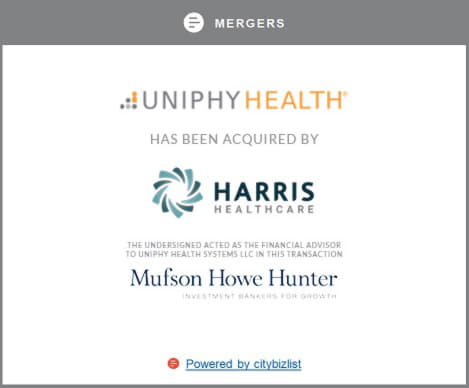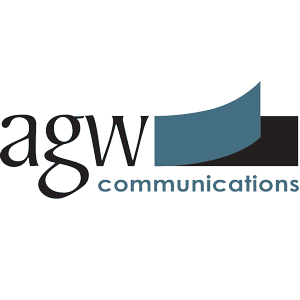BASKING RIDGE, N.J. , May 07, 2020 (GLOBE NEWSWIRE) -- Caladrius Biosciences, Inc. (Nasdaq: CLBS), a clinical-stage biopharmaceutical company dedicated to the development of cellular therapies designed to reverse, not manage, disease, provides a corporate update and announces financial results for the three months ended March 31, 2020.
Product Development and Financing Highlights
Caladrius initiates development of CLBS119, a CD34+ cell therapy specifically intended to repair COVID-19 induced lung damage
For thousands of COVID-19 survivors leaving hospitals around the world, vestiges of the virus will return home with them in the form of debilitating lung damage. Many companies are searching for treatments for the acute effects of the virus or for a vaccine that thwarts infection altogether. Caladrius, however, has taken a leadership position in helping those patients who have beaten the virus but have suffered potentially permanent lung damage in the battle. Initial evidence indicates that a large portion of the survivors of COVID-19 who required ventilatory support will suffer long-term, debilitating lung damage.1 Scientists learned in the aftermath of the first SARS epidemic that the coronavirus targets cells that express CD34.2 Depletion of that cell population generally is thought to be connected to the lung’s inability to repair itself.2 Early reports from the COVID-19 pandemic indicate that the endothelial cells that line the microvasculature of the lung are targeted by the virus and that the destruction of the lung microcirculation may be a critical factor in the inability of the lung to repair itself even after the virus has been eliminated.3 Clinical trials and preclinical models have shown that CD34+ cells act in a restorative and regenerative capacity in multiple organs, including models of severe lung inflammation.4 Research has also shown that a deficiency in vascular CD34+ cells can result in a predisposition to injury in the lungs.5 Caladrius has opened an Investigational New Drug (“IND”) application, agreed with the Food and Drug Administration (“FDA”) on a protocol and has begun manufacturing preparation with the intention of initiating a clinical trial as soon as possible to evaluate CLBS119 as a treatment to restore lung function specifically in patients who experienced severe SARS-CoV-2 infection and required ventilatory support due to respiratory failure.
CLBS12 development in Japan continues to yield promising results
The Company’s open-label, registration-eligible study of CLBS12, its SAKIGAKE-designated product candidate, in Japan for the treatment of critical limb ischemia (“CLI”), a disease with no currently available approved therapy6 and a higher mortality rate than all cancers except that of lung cancer,7 has shown positive results to date. The Buerger’s Disease cohort has concluded with 4 out of 7 (57%) patients achieving a positive outcome. Although the study enrollment, which had been targeted for completion this year, has been slowed by the impact of the COVID-19 pandemic in Japan, the Company is encouraged by the patient pre-screening pipeline that has been identified and hopes to conclude the trial enrollment rapidly once the coronavirus abates and physicians are again able to treat non-COVID-19 patients. Based on the data from the concluded Buerger’s Disease cohort and the data to date in the no-option CLI cohort, the Company affirms its expectation of the study’s ultimate success.
CLBS16 demonstrates ability to improve coronary flow reserve in patients and potentially reverse coronary microvascular dysfunction
Caladrius reported that it has concluded its ESCaPE-CMD study of CLBS16 for the treatment of coronary microvascular dysfunction (“CMD”), a disease that potentially afflicts millions annually with no current treatment options. The full data from that study will be presented at the SCAI 2020 Scientific Sessions Virtual Conference on May 14th and is expected to corroborate the positive partial results presented at the American Heart Association Scientific Sessions in November 2019. The Company is already taking steps necessary to initiate the next trial in CLBS16 development, a Phase 2b study, in the fall of 2020.
CLBS14 remains poised to enter a single confirmatory phase 3 clinical trial pending finalization of funding
The Company’s Phase 3 protocol for its RMAT-designated product candidate, CLBS14, for the treatment of no-option refractory angina (“NORDA”) remains ready to initiate pending sufficient funding to run the program to completion. Based on substantial data from previous Phase 1, 2, and 3 studies, Caladrius remains confident in the potential for clinical success once the program is executed.
An additional ~$16 million of capital (~$11 million of which is non-dilutive) added to balance sheet
Notwithstanding the challenging financial macro-environment, Caladrius recently announced that it secured approximately $10.9 million of non-dilutive capital from the sale of its New Jersey net operating losses (“NJ NOLs”) through the New Jersey Technology Business Tax Certificate Transfer Program. Soon thereafter it raised an additional $5.0 million pursuant to a registered direct institutional offering priced at-the-market under Nasdaq rules. This infusion of capital at this time once again demonstrates the Company’s ability to acquire non-dilutive capital. The successful completion of the registered direct offering during the COVID-19 pandemic also reinforces the attractiveness of the Company, its progress and the potential of its programs to the capital markets. The collected funds will, among other things, support the continued advancement of its ongoing CD34+ technology-based clinical programs.
“Throughout this extraordinary time, we remain steadfast in our commitment to advance our CD34+ cell technology-based clinical development programs, even as the global COVID-19 pandemic provokes unprecedented challenges for product development,” stated David J. Mazzo, Ph.D., President and Chief Executive Officer of Caladrius. “In fact, we have rallied to address the challenges of the pandemic and responded by defining and quickly moving to development CLBS119. We’ve done this while further securing our financial situation at a time when other companies are being forced to take draconian measures just to survive financially.
“Despite the global uncertainty brought about by the coronavirus, we are excited about what lies ahead in 2020 and expect to build on the momentum we generated during the first quarter,” concluded Dr. Mazzo.
First Quarter 2020 Financial Highlights
Research and development expenses for the first quarter of 2020 were $1.5 million, a 26% decrease compared with $2.0 million for the first quarter of 2019. Research and development in both periods focused on the advancement of our ischemic repair platform. More specifically, R&D expense was incurred as a result of our ongoing registration-eligible study for CLBS12 in critical limb ischemia in Japan, along with the concluding expenses for our ESCaPE-CMD clinical study for CLBS16 in coronary microvascular dysfunction. Note that the majority of costs associated with the ESCaPE-CMD clinical trial were covered by a grant from the National Institutes of Health.
General and administrative expenses, which focus on general corporate related activities, remain constant and were approximately $2.6 million for both the first quarters of 2020 and 2019.
The net loss for the first quarter of 2020 was $4.0 million, or $0.38 per share, compared with $4.4 million, or $0.44 per share, for the first quarter of 2019.
Balance Sheet Highlights
As of March 31, 2020, Caladrius had cash and cash equivalents of $20.7 million. Together with the combined net proceeds from the sale of the NJ NOLs and the registered direct offering in April 2020, our cash and cash equivalents today are approximately $34 million. Based on existing programs and projections, the Company remains confident that its current cash balances will fund its operations into the second half of 2021.
About Caladrius Biosciences
Caladrius Biosciences, Inc. is a clinical-stage biopharmaceutical company dedicated to the development of cellular therapies designed to reverse, not manage, cardiovascular disease. We are developing a first- in-class cell therapy product that is based on the notion that our body contains finely tuned mechanisms for self-repair. Our technology leverages and enables these mechanisms in the form of specific cells, using formulations and modes of delivery unique to each medical indication.









